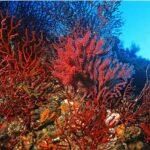Did you know that there is an entire field of research that is completely inspired by nature’s processes? After studying them they adapt them to sustainable design and innovation in a variety of fields: from architecture to transportation, to energy, medicine and communication. The name of this type of research is “biomimicry” and the Biomimicry Institute in Montana, USA is spearheading the movement.
“The Biomimicry Institute empowers people to create nature-inspired solutions for a healthy planet”

The Floating Coconet
The institute encourages businesses and individuals to approach sustainability issues with a different outlook. They primarily engage people through the Youth Design Challenge and Global Design Challenge, with support from the Global Biomimicry Network to come up with nature-inspired solutions.

Strobilus
Here some examples:

Werewool

The Moist Brick
-
Floating Coconet
This innovation aims to capture plastic pollution in rivers before it has the chance to enter the oceans. By mimicking the way organisms like manta rays and basking sharks filter food from water, Floating Coconet is able to collect and direct free-flowing plastics, small and large in size, in rivers for safer capture.
-
Strobilus
The system makes use of non-obstructive filtering, thereby avoiding pressure drop and energy requirements. Particles are concentrated in readily available residues providing PM devoid emissions. The team aims to collect PM at the source of pollution (combustion of fuels) with an end-of-pipe solution that can be easily implemented and capture a broad range of particles
-
Werewool
Werewool identifies protein structures found in nature, such as the red fluorescent protein found in the Discosoma Coral. They then grow fibers that are reliant on these proteins, creating textiles with inherent performance properties such as color or stretch, without the need for toxic dyes, finishes, and petroleum based synthetics
-
The Moist Brick
To solve for extreme changes in weather and provide a solution for natural cooling, the Designmatter team created the Moist Brick, a concept for a building material that would condense water from nighttime air and collect it on the surface as an evaporative cooling system for buildings. They were inspired by the hydrophilic hairs on the surface of some plants and the Texas Horned Lizard, which uses capillary action to move water from anywhere on its skin to its mouth.
-
Nucleário
Inspired by winged seeds, bromeliads, and forest leaf litter, Nucleário offers a smarter, cheaper, and faster approach for large-scale forest restoration by providing innovative products proven to reduce seedling maintenance. The Nucleário Planting System eliminates the need for irrigation, herbicides, and pesticides
-
Undula Tech
Undula Tech looked to the undulating fin motion of cuttlefish to develop an energy-producing turbine. By harvesting the energy of flowing mediums like air and water, Undula Tech of New York, NY seeks to make renewable energy accessible and affordable to ordinary people. It is designed to be mounted on rooftops or sides of homes or buildings, along roadways or in tunnels, or in flowing water like rivers or tidal flows, as a potentially non-invasive hydro turbine.













